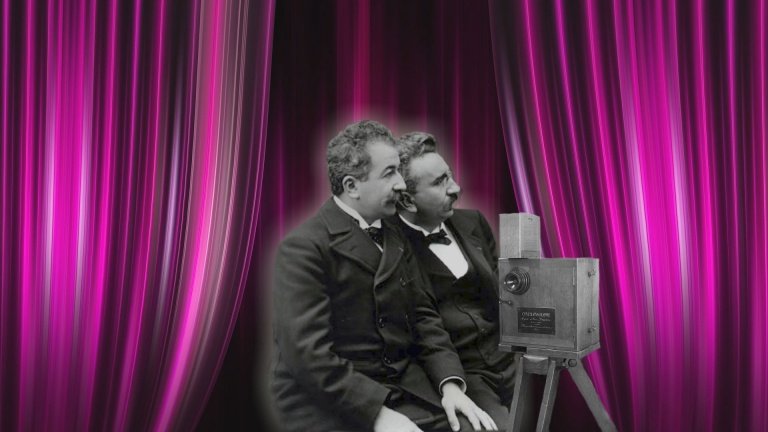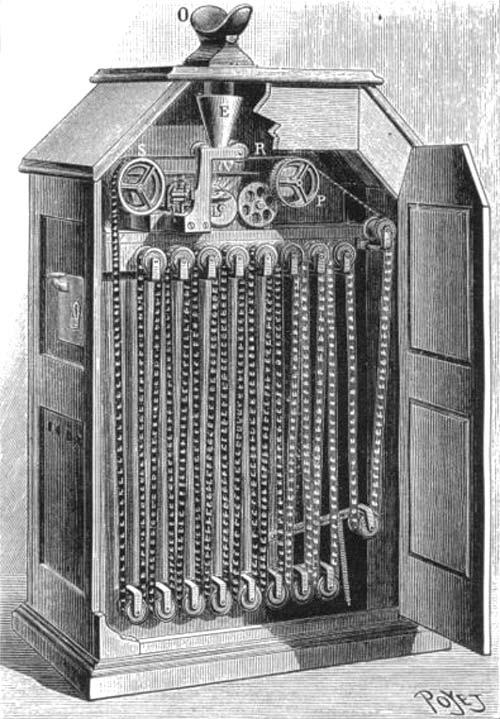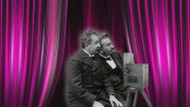The Lumière Brothers: Projecting the Future of Cinema
By on Jan 05 2018

Brothers Auguste and Louis Lumière were pioneers in the photography industry and were among the first filmmakers in history. As the sons of a well-known portrait painter-turned-photographer in Lyon, France, it didn't take long for Auguste and Louis to get into the business.
Louis invented a new —dry plate " process of developing film by the time he was seventeen. It was a real game-changer in the industry. This new plate, Etiquettes Bleue, or Blue Label, was incredibly successful. It helped make the name Lumière synonymous with photography. This new plate boosted business enough that they were able to open a new factory in the suburbs. By 1894, The Lumières were producing 15 million plates a year.
While this success helped fuel (and fund) the brothers' later projects, successes, and career paths, it was Thomas Edison and his invention that inspired their next move.
Thomas Edison's Bright Idea

Edison's Kinetoscope
When Thomas Edison invented the phonograph in 1877, he created the most popular home entertainment device of the era. But he also wanted more than just auditory entertainment; he wanted a visual component to accompany it. Edison commissioned William Dickson, one of his most talented employees, to invent a motion-picture camera in 1888. The resulting Kinetograph initially imprinted up to 50 feet of celluloid film at the rate of about 40 frames per second.
Films shot on the Kinetograph were not displayed via a projector. Rather, a device called the Kinetoscope allowed films to be viewed by one individual at a time through a peephole viewer. With the Kinetoscope, a continuous 47-foot film loop ran on spools between an incandescent lamp and a shutter.
It was at an exhibition in Paris in 1894 where Antoine Lumière (their father) encountered the Kinetoscope. Upon returning to Lyon, he showed Auguste and Louis a length of film. He wanted to develop a cheaper alternative to Edison's device and bulky camera. And because Edison's Kinetoscope was for one viewer only, Antoine further encouraged his sons to come up with something that multiple people could view at the same time.
By early 1895, the Lumières had come up with their own device: the Cinématographe. It was much smaller than Edison's Kinetograph, and lighter, too, which made it relatively portable. The Cinématographe was also hand-cranked, rather than battery-powered.
The differences in the two machines affected what films were made using them. Edison, on the one hand, initially featured subjects like circus and vaudeville acts that could be performed in front of an inert camera. The Lumières, on the other hand, filmed more documentary views, or —actualities, " shot outdoors on location. All films were composed of a single unedited shot emphasizing lifelike movement with little-to-no narrative content.
The Cinématographe
Eventually, design changes allowed Edison and the Lumières to shoot similar subjects. During this early period, the Lumière technology became the European standard. Because they also sent cameramen all over the world for exotic subjects, the Cinématographe also became the founding instrument of cinemas in Russia, Australia, and Japan, too.

Cinématographe Lumière By Victorgrigas, CC BY-SA 4.0[/caption]
The Cinématographe itself weighed around 11 pounds and photographed and projected film at a speed of 16 frames per second. This was significantly slower than the Kinetograph, which operated at 48 frames per second. The slower speed made it less noisy to operate and cheaper, too, since it used less film.
Not just a camera and not just a projector, the Cinématographe was both: it could record, develop, and project motion pictures in an all-in-one device. It is considered the first viable film camera.
At the heart of the Cinématographe was the mechanism which transported film throughout the camera. Two pins (or claws) gripped the sprocket holes punched into the celluloid film. These pins moved the film along and then retracted so the film was stationary during exposure. Louis designed this system based off of how sewing machines worked. Edison himself had considered this very idea but rejected it in favor of the continuous movement.
Early Motion Pictures and the Rise of Cinema
In March 1895, the brothers shot their first rudimentary film, La Sortie des Usines Lumiere —("Workers Leaving the Lumière Factory"). The film was, literally, footage of workers at their factory leaving at the end of the day. They showed the film for the first time at an industrial meeting in Paris and set up a number of screenings for French scientific institutions the same month. La Sortie des Usines Lumiere —is considered the very first motion picture.
Their moving pictures, though black and white, received far more interest than their color photography, which they also exhibited.
The first public exhibition of their films was held in the evening of December 28, 1895 at the Salon Indien, an empty basement beneath the Grand Cafe, at 14 Boulevard des Capucines, near the place de l'Opera. By early 1896, they opened Cinématographe theaters in London, Brussels, Belgium and New York.
Louis Lumière may have designed the technology that made the public projection of moving pictures possible, but it was his father Antoine who really turned it into a public spectacle. Louis didn't really believe in cinema, going so far as to assert that "The cinema is an invention without any commercial future". He saw these moving picture films as nothing beyond scientific curiosity. In fact, he saw it as just a craze that would likely end as quickly as it started: "It may last six months, a year, perhaps more, probably less, " he said to the cameramen.
But Louie Lumière was dead wrong about the life of filmmaking.
As the projected moving picture phenomenon crossed the Atlantic and into the United States, competition grew. America inventors and companies didn't like this French-made technology hindering their profits and inventors from both countries claimed credit for the invention.
The Lumières withdrew from the moviemaking business by 1905 in favor of developing the first practical photographic color process, the Lumière Autochrome. Although they left the Cinématographe behind, they didn't fully leave the business. Their work had already left a lasting impression on this brand-new form of art and entertainment: cinema.
Interested in learning more about the history of film? Read about how photographic film is made here!
Additional Sources:
http://www.history.com/news/the-lumiere-brothers-p...
https://www.britannica.com/art/history-of-the-moti...






